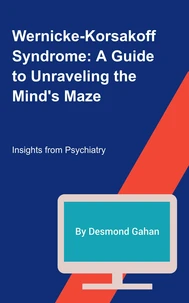Breaking Bulimia
Par :Formats :
Disponible dans votre compte client Decitre ou Furet du Nord dès validation de votre commande. Le format ePub est :
- Compatible avec une lecture sur My Vivlio (smartphone, tablette, ordinateur)
- Compatible avec une lecture sur liseuses Vivlio
- Pour les liseuses autres que Vivlio, vous devez utiliser le logiciel Adobe Digital Edition. Non compatible avec la lecture sur les liseuses Kindle, Remarkable et Sony
 , qui est-ce ?
, qui est-ce ?Notre partenaire de plateforme de lecture numérique où vous retrouverez l'ensemble de vos ebooks gratuitement
Pour en savoir plus sur nos ebooks, consultez notre aide en ligne ici
- FormatePub
- ISBN978-1-386-40787-4
- EAN9781386407874
- Date de parution11/06/2017
- Protection num.pas de protection
- Infos supplémentairesepub
- ÉditeurRelay Publishing
Résumé
Bulimia nervosa is characterised by repeated episodes of binge-eating followed by behaviour aimed at compensating for the out of control eating. These compensatory behaviours can include fasting, self-induced vomiting, the use of laxatives and diuretics or appetite suppressants and excessive exercising. In many cases, bulimia begins with a diet but the preoccupation with food and weight becomes obsessive and can take over the person's life.
Eventually, they will become locked into a compulsive cycle of bingeing and purging (getting rid of the food) or resorting to other ways of preventing weight gain. Attempts to break the cycle often fail. The person begins to feel more and more out of control. Self-esteem is very low as it is measured against the ability to control one's eating, weight, shape and size. On the outside, a person with bulimia may seem very capable, positive, successful and on top of things.
However, on the inside, they may be struggling desperately with feelings of guilt, shame, self-loathing and ineffectiveness. For some people, bulimia develops after a period of anorexia. In such cases, diagnosis is not always clear-cut and treatment can be more complex. Many people with bulimia maintain a normal body weight. As a result, the disorder can sometimes go unnoticed and untreated for a long time.
The longer the binge-purge cycle remains in place, the harder it becomes to overcome it. Repeated episodes of binge eating, i.e. eating larger than normal quantities of food in a short space of time. Compensating for binges - this can take the form of purging or getting rid of the food by vomiting or using laxatives. Other means of trying to ensure there is no weight gain include periods of fasting or dieting, exercising and using diuretics.
Preoccupation with body weight, shape and size. Self-evaluation is influenced significantly by body weight, size and shape. Hormonal disturbance including irregular menstruation. Other Signs & SymptomsPhysical signs and symptoms: Frequent changes in weight. Lethargy, tiredness and insomnia. Dehydration. General digestive problems (cramps, wind, constipation, diarrhoea) Poor skin condition. Headaches, tension.
Sore throat and mouth ulcers, husky voice. Calluses on fingers. Irregular periods. Enlarged salivary glands. Erosion of tooth enamel, tooth decay.
Eventually, they will become locked into a compulsive cycle of bingeing and purging (getting rid of the food) or resorting to other ways of preventing weight gain. Attempts to break the cycle often fail. The person begins to feel more and more out of control. Self-esteem is very low as it is measured against the ability to control one's eating, weight, shape and size. On the outside, a person with bulimia may seem very capable, positive, successful and on top of things.
However, on the inside, they may be struggling desperately with feelings of guilt, shame, self-loathing and ineffectiveness. For some people, bulimia develops after a period of anorexia. In such cases, diagnosis is not always clear-cut and treatment can be more complex. Many people with bulimia maintain a normal body weight. As a result, the disorder can sometimes go unnoticed and untreated for a long time.
The longer the binge-purge cycle remains in place, the harder it becomes to overcome it. Repeated episodes of binge eating, i.e. eating larger than normal quantities of food in a short space of time. Compensating for binges - this can take the form of purging or getting rid of the food by vomiting or using laxatives. Other means of trying to ensure there is no weight gain include periods of fasting or dieting, exercising and using diuretics.
Preoccupation with body weight, shape and size. Self-evaluation is influenced significantly by body weight, size and shape. Hormonal disturbance including irregular menstruation. Other Signs & SymptomsPhysical signs and symptoms: Frequent changes in weight. Lethargy, tiredness and insomnia. Dehydration. General digestive problems (cramps, wind, constipation, diarrhoea) Poor skin condition. Headaches, tension.
Sore throat and mouth ulcers, husky voice. Calluses on fingers. Irregular periods. Enlarged salivary glands. Erosion of tooth enamel, tooth decay.
Bulimia nervosa is characterised by repeated episodes of binge-eating followed by behaviour aimed at compensating for the out of control eating. These compensatory behaviours can include fasting, self-induced vomiting, the use of laxatives and diuretics or appetite suppressants and excessive exercising. In many cases, bulimia begins with a diet but the preoccupation with food and weight becomes obsessive and can take over the person's life.
Eventually, they will become locked into a compulsive cycle of bingeing and purging (getting rid of the food) or resorting to other ways of preventing weight gain. Attempts to break the cycle often fail. The person begins to feel more and more out of control. Self-esteem is very low as it is measured against the ability to control one's eating, weight, shape and size. On the outside, a person with bulimia may seem very capable, positive, successful and on top of things.
However, on the inside, they may be struggling desperately with feelings of guilt, shame, self-loathing and ineffectiveness. For some people, bulimia develops after a period of anorexia. In such cases, diagnosis is not always clear-cut and treatment can be more complex. Many people with bulimia maintain a normal body weight. As a result, the disorder can sometimes go unnoticed and untreated for a long time.
The longer the binge-purge cycle remains in place, the harder it becomes to overcome it. Repeated episodes of binge eating, i.e. eating larger than normal quantities of food in a short space of time. Compensating for binges - this can take the form of purging or getting rid of the food by vomiting or using laxatives. Other means of trying to ensure there is no weight gain include periods of fasting or dieting, exercising and using diuretics.
Preoccupation with body weight, shape and size. Self-evaluation is influenced significantly by body weight, size and shape. Hormonal disturbance including irregular menstruation. Other Signs & SymptomsPhysical signs and symptoms: Frequent changes in weight. Lethargy, tiredness and insomnia. Dehydration. General digestive problems (cramps, wind, constipation, diarrhoea) Poor skin condition. Headaches, tension.
Sore throat and mouth ulcers, husky voice. Calluses on fingers. Irregular periods. Enlarged salivary glands. Erosion of tooth enamel, tooth decay.
Eventually, they will become locked into a compulsive cycle of bingeing and purging (getting rid of the food) or resorting to other ways of preventing weight gain. Attempts to break the cycle often fail. The person begins to feel more and more out of control. Self-esteem is very low as it is measured against the ability to control one's eating, weight, shape and size. On the outside, a person with bulimia may seem very capable, positive, successful and on top of things.
However, on the inside, they may be struggling desperately with feelings of guilt, shame, self-loathing and ineffectiveness. For some people, bulimia develops after a period of anorexia. In such cases, diagnosis is not always clear-cut and treatment can be more complex. Many people with bulimia maintain a normal body weight. As a result, the disorder can sometimes go unnoticed and untreated for a long time.
The longer the binge-purge cycle remains in place, the harder it becomes to overcome it. Repeated episodes of binge eating, i.e. eating larger than normal quantities of food in a short space of time. Compensating for binges - this can take the form of purging or getting rid of the food by vomiting or using laxatives. Other means of trying to ensure there is no weight gain include periods of fasting or dieting, exercising and using diuretics.
Preoccupation with body weight, shape and size. Self-evaluation is influenced significantly by body weight, size and shape. Hormonal disturbance including irregular menstruation. Other Signs & SymptomsPhysical signs and symptoms: Frequent changes in weight. Lethargy, tiredness and insomnia. Dehydration. General digestive problems (cramps, wind, constipation, diarrhoea) Poor skin condition. Headaches, tension.
Sore throat and mouth ulcers, husky voice. Calluses on fingers. Irregular periods. Enlarged salivary glands. Erosion of tooth enamel, tooth decay.





















